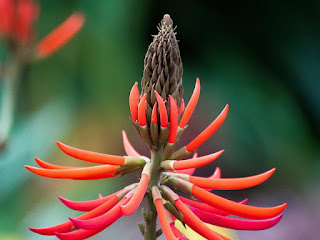Linden Tree Blossom - how to use it?
Linden (or Limeflower, Tilia sp.) is a common tree planted around many cities. It's the one that makes cars sticky with the dripping nectar from their flowers, and when in full bloom the rich honey scent will attract every bee from miles around to drunkenly sip from its cups.
Linden tree was once one of the most common native trees in the ancient forests of Britain and the bark makes a useful rope once used in shipmaking. It is a great tree to know for bushcraft for its twine and edible leaves(best in early spring when tender and succulent).
Because it is a tree, it is almost impossible to over-harvest the blossoms and so makes a nice, abundant, sustainable edible & medicinal for you to stock up on for the rest of the year.
Uses
Linden is a relaxer. It also very tasty. Strong infusions of the blossom make a lovely drink and is used by herbalists for those suffering from stress, particularly if associated with insomnia or heart palpitations, and Maude Grieve in her 1931 herbal recommends it for nervous vomiting. In Europe, a way to help restless young children sleep is to bathe them in the infusion or decoction.
It is this relaxing power that can be harnessed as a 'non-alcoholic social lubricant'. Moderate alcohol makes the drinker feel at ease, but not everyone can or wants to drink. Linden is your friend here, and drinking a slow-decoction (recipe at end) creates a deep red elixir that helps to ease anxieties away.
The trick is to use freshly picked flowers however, older ones are reported to be too sedative for social use!
Identification:
Linden has heart shaped green leaves, and there are three commonly found species. Large leafed (T. platyphyllos) has a rougher looking leaf that is evenly hairy on both sides. Small leaved lime (T. cordata) leaves are glabrous (non-hairy) on the top, but has reddish tufts in the leaf vein axils underneath. The cross between these two species and most commonly found in city streets is the common lime (Tilia x europea). This species also has a glabrous leaf but the tufts underneath the leaf in the vein axils are white.
The flowers grow down long from a strap-like pale green bract (see picture) and it is both this and the bract that are picked for use.
For the geeks among you: here is an automatic pdf download of the full botanical identification from the Botanical Society of Britain & Ireland (BSBI), click here.
Processing
Lay the freshly picked flowers evenly on a piece of clean material out of direct sunlight: they will dry easily. Once dried, keep in a labelled, airtight container in a cool dark place.
Linden Deep Decoction
2 handfuls of fresh or dry linden blossoms
1.5 litres of water
Place the blossoms and water in a large pan. Bring to the boil and then cover, turn down the heat and simmer gently for 20 minutes.
Turn off the heat, and keep covered. Allow the mixture to sit overnight.
Strain out the blossoms and keep the decoction in the fridge. It will keep for up to three days.
Use in the bath or take table spoons as needed. Alternatively you can freeze in ice-cube trays for use as needed. Just add one cube to a hot or cold cup of water.
Linden Cold & Flu Elixir
Linden is also a 'diaphoretic'. This means when you have a fever, you can regulate your temperature by sweating. When you have a cold or flu, ideally you should rest, go to bed and allow your body to 'sweat it out'* The linden also eases a restful healing sleep.
You can also take the decoction from the previous recipe and add 50% Spiced Rum. Bottle and label. Take 50mls in hot water and go to bed.*
*This is not appropriate for children whos temperature regulation may not be properly developed. Overheating in children may lead to fever induced fits. Seek medical advice form a herbalist or GP about avoiding this.



Comments
Post a Comment